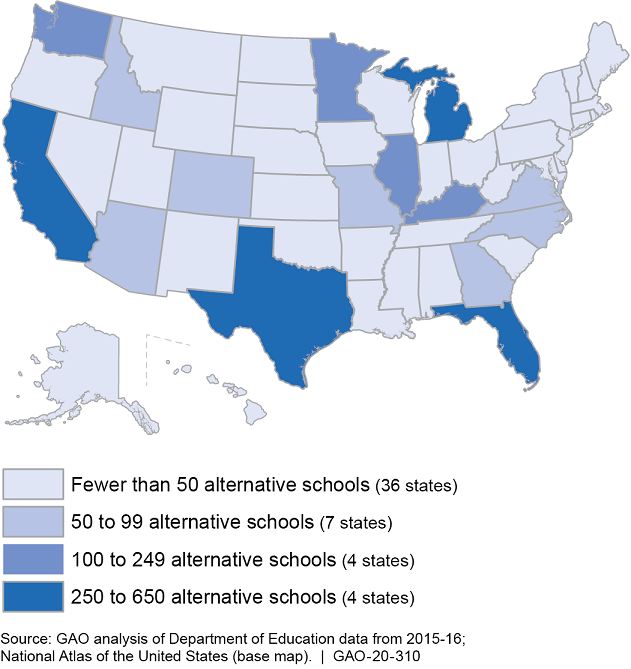K-12 Education: Information on How States Assess Alternative School Performance
Fast Facts
Alternative schools may offer a different educational approach to serve expelled students or others whose needs typically can’t be met in a regular school.
We looked at how 15 states hold alternative schools accountable for academic performance. All 15 states used at least one indicator that researchers and studies consider useful for assessing alternative schools. For example, 11 states used college and career readiness indicators, such as industry-recognized certifications. Ten states allowed for more than 4 years of high school attendance when measuring graduation rates, which may better reflect alternative school achievement.
A Classroom in an Alternative School in Kentucky

A classroom
Highlights
Why This Matters
States use their accountability systems to identify low-performing schools, which can receive added support and are expected to improve.
Alternative schools serve students whose needs are not met in a regular school. They often serve at-risk students who are struggling academically or behaviorally.
Given this unique population, we looked at how states hold alternative schools accountable.
Key Takeaways
Our review of 15 selected state accountability systems—used to assess all types of schools—found that all 15 include at least one indicator that research organizations and relevant studies considered useful in capturing alternative school achievement. For example:
- Eleven of the fifteen states use college and career readiness indicators. These indicators may capture achievements (e.g., industry-recognized certifications, internships) that prepare high school students for a career rather than higher education. Alternative schools commonly have a career focus.
- Ten of the fifteen states use extended-year graduation rates. Students at alternative schools may be behind on credits or face trauma and other challenges that can hinder learning. We found that alternative high schools have substantially lower 4-year graduation rates. So, some states’ practice of measuring graduation rates past the standard 4years may capture additional alternative school performance.
We also found a few states that, as part of their accountability system, adopted approaches to differentiate alternative schools when identifying them for support and improvement. For example, when identifying the lowest performing 5 percent of schools, Idaho groups alternative schools separately from nonalternative ones.
Distribution of Alternative K-12 Public Schools

How GAO Did This Study
We analyzed the Department of Education’s most recent alternative school data; reviewed federal laws and accountability systems from 15 states with the most alternative schools; and interviewed federal and selected state, school district, and school officials in three states.
For more information, contact Jacqueline M. Nowicki at (617) 788-0580 or nowickij@gao.gov.
